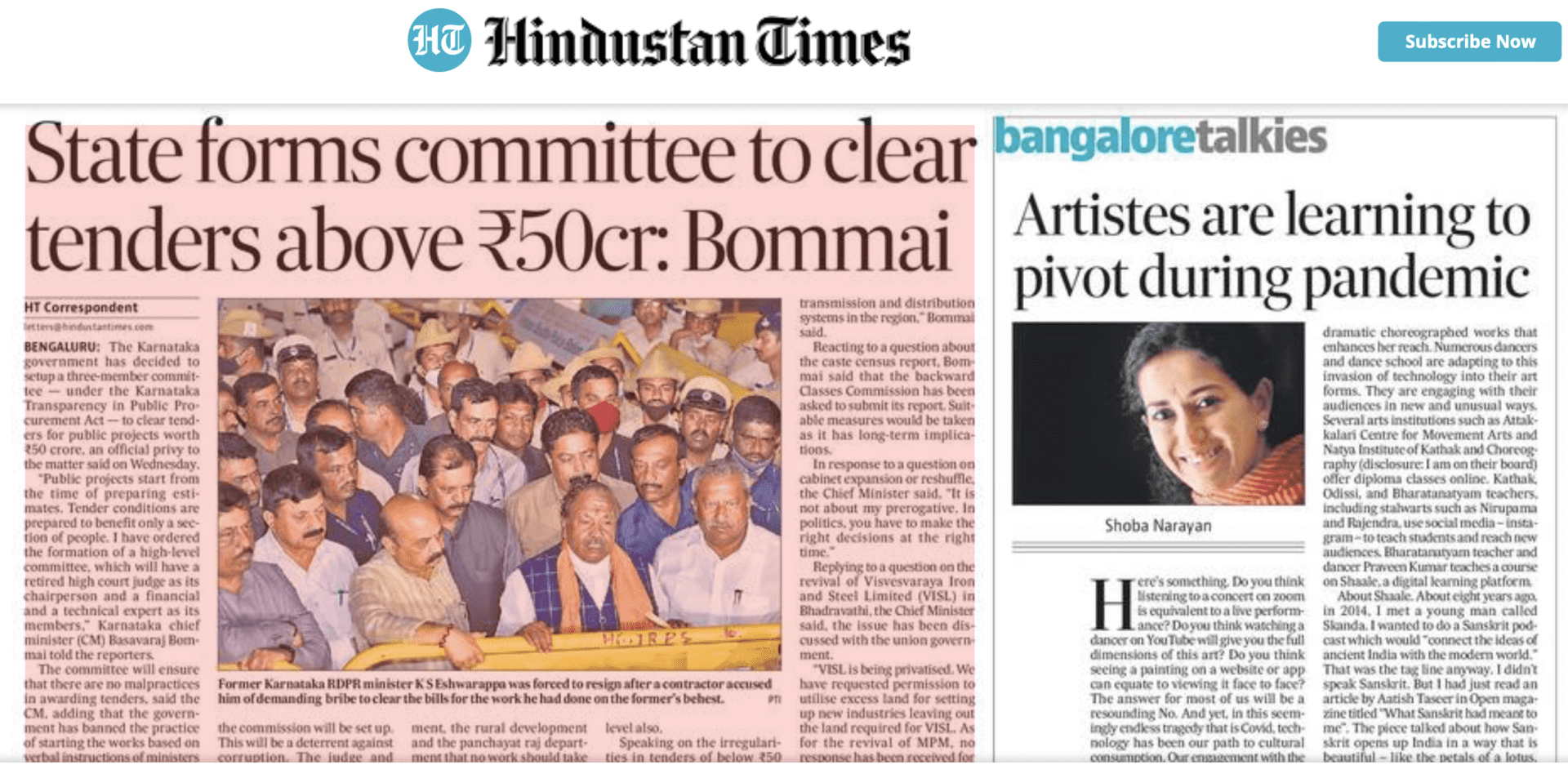Here’s something. Do you think listening to a concert on zoom is equivalent to a live performance? Do you think watching a dancer on youtube will give you the full dimensions of this art? Do you think seeing a painting on a website or app can equate to viewing it face to face? The answer for most of us will be a resounding No. And yet, in this seemingly endless tragedy that is Covid, technology has been our path to cultural consumption. Our engagement with the arts was mostly if not exclusively online. This gives us a false sense of security.
In this last year, I have watched art offered by the Museum of Art and Photography (MAP) online. I have listened to a virtual piano concert organized by the International Music and Arts Society (IMAS). I have attended countless virtual book releases organized by the Bangalore Literature Festival, and done a 3D walkthrough on the Indian Music Experience (IME) digital platform.

The problem is that engaging with the arts virtually gives a feeling of false security. It gives us the feeling that we have absorbed something even though what we have experienced is a shadow of reality. Technology makes the arts accessible and pervasive, universal and ubiquitous. What it lacks is the immersive emotional depth that only a live experience can give.
So what do we do? Technology is here to stay even in the intangible cultural realms that lend themselves to collaboration and participation. Today, even antakshari jamming sessions happen virtually with participants all over Bangalore.
While technology can enhance many experiences– learning a language for instance is just as easily done online– it does the performance arts a disservice. To experience the profound emotional resonances of a dance or theatre performance, you have to be there. Performing arts are not portable like books, they are not two-dimensional like films. No, a dance performance demands physical proximity, as does Yakshagana or a theatre show at Bangalore’s beloved Rangashankara.
Covid has forced performing artists to adapt. Singer Sanjay Subrahmanyan has created and monetized his Youtube channel. Dancer Rukmini Vijayakumar has adapted her performance to the flatness of screen, performing the type of dramatic choreographed works that enhances her reach. Numerous dancers and dance school are adapting to this invasion of technology into their art forms. They are engaging with their audiences in new and unusual ways. Several arts institutions such as Attakkalari Centre for Movement Arts and Natya Institute of Kathak and Choreography (disclosure: I am on their board) offer diploma classes online. Kathak, Odissi, and bharatanatyam teachers including stalwarts such as Nirupama and Rajendra use social media– instagram– to teach students and reach new audiences. Bharatanatyam teacher and dancer Praveen Kumar teaches a course on Shaale, a digital learning platform.
About Shaale. About 8 years ago, in 2014, I met a young man called Skanda. I wanted to do a Sanskrit podcast which would “connect the ideas of ancient India with the modern world.” That was the tag line anyway. I didn’t speak Sanskrit. But I had just read an article by Aatish Taseer in Open magazine called, “What Sanskrit had meant to me.” The piece talked about how Sanskrit opens up India in a way that is beautiful– like the petals of a lotus. Skanda and I brainstormed and created a series of episodes for which I interviewed eminent Sanskrit scholars in Seva Sadana in Malleshwaram.
Simultaneously, Skanda was working on his online platform called “Shaale” which means school in Kannada. He wanted to get the top teachers in music, dance, poetry, literature and more to teach students online via Shaale. Today, Shaale features masterclasses in Bharatanatyam, Carnatic or Hindustani music, Mridangam, Sanskrit poetry from the inimitable Shatavadhani Dr. R. Ganesh, and much more. (I have no commercial or personal link to this platform, and gain nothing from this mention.)
For those of us who live far away without access to excellent teachers, online classes are a godsend. But for those who have access to live teachers, learning online becomes a poor substitute. They may offer an initiation but they don’t connect us to the bones of the art form.
I have a problem with consuming culture virtually. I especially dislike how technology has converted live performances into flat-screen replicas. All mediums change the form. Technology for the most part diminishes the performing arts.
Now that Covid is receding, I have decided to enjoy the sheer physicality, presence and immediacy of dance in person. In this coming month, there are two dance events, both at the Bangalore International Centre, one organized by Prakriti Foundation and the other organized by Natya Institute of Kathak and Choreography. There are live performances at the Gayana Samaja. I have decided to attend as many of these as possible. In person.






Leave A Comment